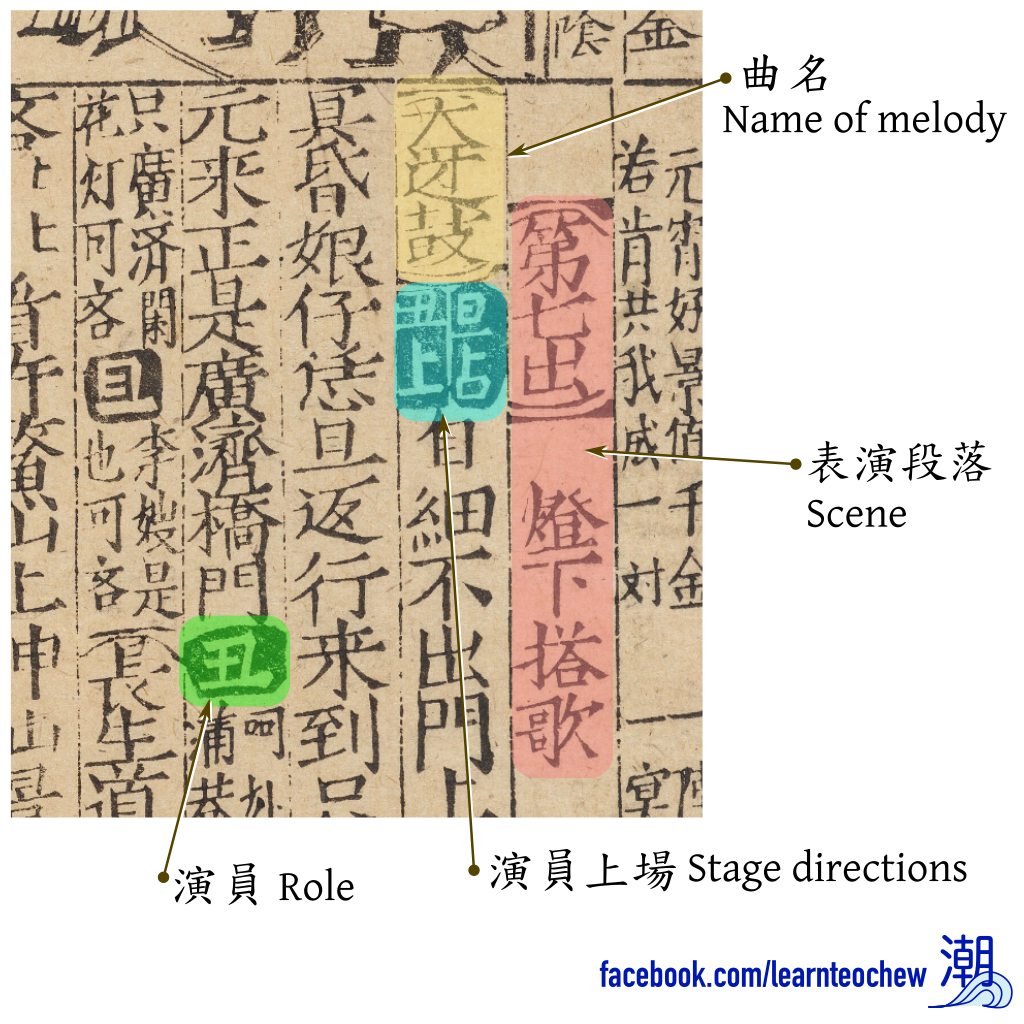How to read historical opera scripts (2)
If you read a modern playscript or screenplay, each scene is usually marked out with a new heading, the different roles are listed at the beginning, the character that speaks each line is indicated, and there are stage directions for actors to enter/exit the stage and to perform certain actions.
These historical Teochew opera scripts also have such stage directions, but some conventions are different from modern ones.
The most obvious difference is that characters’ names are not used in the text to mark who is speaking. Instead the names of the roles are used. To use a Western example, this would be as if the different arias and lines were simply marked as “tenor” or “soprano”, without specifying which tenor or which soprano character is singing.
Teochew opera scripts were not intended to be read like modern literature. The audience and of course the performers would already be familiar with the story, and the number of characters was also not large. The main roles usually had only one character each.

(Photo: © Bodleian Libraries, University of Oxford, reused under CC-BY-NC 4.0 license)
In historical scripts like Li-gian-gi there were seven roles:
- 生 sêng - Male lead
- 旦 duan - Female lead
- 淨 zêng - Painted face
- 丑 tiu - Clown
- 外 ghua - Old man
- 末 bhuah - Old woman
- 貼 tiêb - Second female lead
In modern scripts this has been simplified to four main roles: 生、旦、淨、丑, but each can be subdivided further (e.g. 小生、老生……).
Opera scripts also indicate the names of melodies for the lines that were sung. The same melodies were used between different operas, just with different words. Many of the melodies in the Li-gian-gi are still preserved today in the Lam-gueng 南管 musical tradition.
Further reading:
Posted on 2022-01-13 00:00:00 +0000